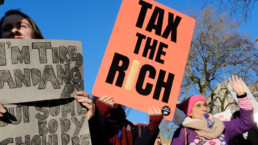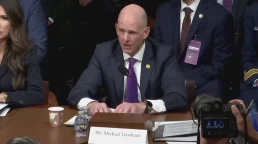Israeli attacks on Lebanon have long been linked to violence in Gaza — that’s why a ceasefire is key to resolving both conflicts.
By Khury Petersen-Smith, Foreign Policy in Focus
As of this writing, Israel’s rampage in Lebanon has killed more than a thousand people in two weeks, wounded thousands more (including many maimed for life), and displaced hundreds of thousands.
The Israeli onslaught — including the assassination of Hezbollah leader Hassan Nasrallah with a 2,000 pound, U.S.-made bomb that killed others too — has mostly garnered approval from American leaders, particularly the president and vice president.
Continuing its genocidal assault of Gaza, bombing Yemen for the second time this year, and carrying out aerial bombardment in Lebanon at a speed and on a scale perhaps unseen in the 21st century, Israel has been making plans to launch a ground invasion. As the invasions and attacks escalate and expand across the region — and Washington continues to send Israel weapons — here are six key things to know about the crisis in Lebanon and how it could be resolved.

1. Israel has a long history of attacks on Lebanon.
In 1982, at the height of Lebanon’s catastrophic, 15 year civil war, Israeli forces invaded, attacking Lebanese villages and Palestinian refugee camps with tanks, airstrikes, and shells.
Israel laid siege to Beirut and collaborated with far-right Christian Lebanese militias as they carried out a notorious massacre of Palestinian refugees in Sabra and the Shatilla refugee camp, killing thousands.
It was during these years that Hezbollah formed to fight the Israeli occupation.
2. Israel occupied Lebanon for 15 years.
Israel occupied a wide strip of Southern Lebanon from 1985 until 2000.
During that time, the Israeli military propped up the South Lebanon Army (SLA) militia, which detained Lebanese and Palestinian dissidents at a notorious prison — administered under Israeli protection — where Amnesty International and other human rights organizations documented systematic torture.
Israel justified its brutal occupation by claiming it needed a “buffer zone” to protect itself — the same excuse it is using to justify its attacks in southern Lebanon today.
Recent Posts
White House Refuses To Rule Out Summary Executions Of People On Its Secret Domestic Terrorist List
December 15, 2025
Take Action Now The Trump administration ignored questions about whether it would order the killings of those on its NSPM-7 list — even while…
Koch Network Fuels Republican Push To Kill ACA Subsidies
December 15, 2025
Take Action Now As millions face higher premiums, Koch‑funded groups are pressuring Republicans to oppose Obamacare subsidy extensions.By Donald…
We’re Making ‘Tax the Rich’ More Than a Slogan
December 14, 2025
Take Action Now “Workers Over Billionaires” was the slogan on Labor Day. It should be the slogan every day.By Max Page, Labor Notes Taxing the…
‘Total Amateur Hour’: FBI Official Says Antifa Is #1 Threat in US—But Can’t Say Where, Who, or What It Is
December 13, 2025
Take Action Now “Just a complete admission here that the entire ‘antifa’ threat narrative is totally manufactured by this administration,” said one…




